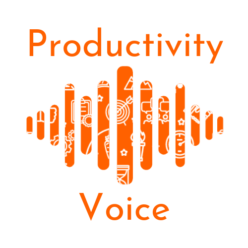- ** Originally Published on www.theentrepreneurnotes.com**

- About Witness Protection Program
That was the question in a discussion with an entrepreneur this morning. This person was questioning how much he needed to risk, his finances, his family, his reputation. What if I fail? My answer was: What if you succeed?
The Entrepreneur route is scary, security is a dream; as it is in a non-entrepreneurial situation. You are writing your own check, conscious or not. The problem again is not the risk, the problem is on risk management.
Your entrepreneurship can be in many things, from shoemaker, to designer , to writer, and any combination of these and many other things. I have friends that cook, design, are marketers, writers, pilots, artists, it doesn’t matter, they are all entrepreneurs, they are building their dream. The problem is entrepreneurship will take a big chunk of time, energy, attention, finances and reputation, and many times all these elements bring the insecurities out, when you are not seeing the results you are expecting, you get frustrated, fear grows, and doubt begins to block the vision. At this time you start considering, how much are you willing to risk?
This morning I read a quote by David Eddings, and even though he was talking about writing, it applies so well to entrepreneurship:
A writer’s apprenticeship usually involves writing a million words (which are then discarded) before he’s almost ready to begin.
David Eddings
After reading this, I smiled, and discovered that Eddings could have been talking about entrepreneurship as well; read the following now:
Entrepreneurship apprenticeship usually involves a million steps (which are then discarded) before he’s almost ready to begin.
I am a writer, I have wanted to be a writer since I was 14 years old, but that was not socially accepted by my family and the people around me (most of them at least) and the people that were willing to support me were the ones that people around me called the weird ones, and you do not want to be associate with them.
By the time I was in my twenties, I sent my writer to a witness protection program, and I created a lawyer out of him. When the lawyer began writing again, I panicked and ran to protect myself, before people could find out about it, so I sent my writer to get an MBA.
Mission accomplished, I hid the writer so well, that it took him 10 years to find his way out, without fear, out of the hole.
I am again, at that time in my life, when I am looking to making the hard decision, send my writer to the witness protection program again, or set him free, let it be, let him out, let him shine.
The problem is, how much do I need to risk in order to let my writer out of the witness protection program?
Writers, entrepreneurs and sales people suffer from the same problem, it is called insecurity. I have yet to meet any of these three kinds of people that do not doubt every morning of their abilities. When you combine the three of them, they make an insecurity bomb. Welcome to my world.
Are you willing to risk everything for that dream? If you are not, then send your entrepreneur to the witness protection program, make out of him anything else; but if you are going to take your entrepreneur out of there, you need to understand that people will judge you, people will be afraid of what you are doing, in many cases, more afraid that you will discover their own witness protection program than what you are doing. People will tell you that you are crazy and should follow a so-called normal life, in other words, send your entrepreneur, or writer, or designer, or artist, to the witness protection program, hide it well and be what they call responsible.
How much are you willing to risk? Are you willing to risk everything? Are you willing to take yourself out of the Witness Relocation Program?

 Coming from “Proverbios y Cantares XXIX” from Antonio Machado (
Coming from “Proverbios y Cantares XXIX” from Antonio Machado (


